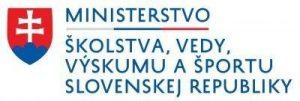A forthcoming Roma Education Fund study on Hungarian educational reforms pinpoints the effect on Roma students’ school success.
A forthcoming Roma Education Fund study on Hungarian educational reforms pinpoints the effect on Roma students’ school success.
Hungary’s Public Education Act of December 2011[1] sought to optimize the Hungarian educational system. Among its legislated changes was a lowering of compulsory school-age from 18 to 16, making it easier for students who were struggling in school to opt out of education. This provision collided with many policymakers’ aspirations that more Roma graduate from high school – either with a vocational qualification ready for the labor market or having passed the state exam to enroll in university.
By 2015, policymakers, particularly those focusing on early childhood development of disadvantaged groups like Roma, were encouraged to see kindergarten made compulsory for Hungarian children between the ages of three and six. This amendment to the Public Education Act,[2] shaped in part by advocacy of the Roma Education Fund, would ideally prepare disadvantage students for enrollment in eight years/grades of primary school and lay the foundations for school success.
Under the current system, students who perform the best and graduate from primary school may continue to high school (gymnasia). Students who have only average results may continue with vocational training and those students with weak grades may continue in so-called trade schools. Higher education requires a high school or vocational school diploma, while trade school qualifications are not enough to apply to higher education institutions.
In 2014, a REF-supported research team led by György Mártonfi conducted an exhaustive qualitative study in order to answer how changes in Hungarian legislation impacted the educational outcomes of disadvantaged pupils and Roma youth since 2011.
When Hungary’s parliament of 2011 created an entirely new act on public education, they did not only reduce the ceiling for compulsory education to 16. They also modified Hungary’s vocational training system, in addition to a number of smaller changes that could affect the opportunities for low-performing students to finish their studies and integrate into the labor market.
The findings of Mártonfi’s research, will be published as a 250-page report in Hungarian, with a 35-page summary in English, later in 2016 by the Roma Education Fund. The results rely on nearly 150 interviews and individual-based data collection and data analysis from 37 classes. Ultimately, it seeks to understand the impact of the legislative changes on the national, regional and local level, with a special focus on education type, disadvantage and Roma students.
A quantitative analysis was also conducted, relying on data on dropouts from KIR-STAT.[3] Among its major topics are continuing studies, repeating grades, dropping out, absenteeism, school-age and socio-economic disadvantage. Six case studies are also embedded in the report, one from an academic high school and five from vocational high schools (four of which also provide trade qualifications and two of which are members in Hungary’s controversial Bridge (Híd) Program.
The report’s ample data allows the following insights into the current landscape of the Hungarian education system. Notably:
- The introduction of a higher compulsory school-age (18) meant that disadvantaged and Roma students spent more time in school, yet the policy did not result in better graduation rates, which would require huge improvements in teaching and human resources.
- New structures created by the Public Education Act of 2011 led to less availability of professional training, decreased the chances of continuing to higher education and decreased access to the labor market due to the low level of training. All these indicators eroded more dramatically in the case of Roma compared to the average.
- The definition of (multiply) disadvantaged that appeared in the previous public education act was removed and appended to the Child Protection Act. Diagnosing and documenting such conditions became more difficult.
- Once decentralized to the local level, the maintenance of education institutions was re-centralized under the Public Education Act of 2011, apparently in a move to equalize funding and professional guidance. But in schools maintained by KLIK[4] (the national school authority), no signs of improvement in school conditions were observed.
- In a decade, the number of trade schools with a Roma majority student body more than doubled. Today, every fourth school has a Roma majority; these schools are either ghettoized or shortly will be.
- Seventy-five percent of Roma repeat a grade in vocational school compared with no more than 45 percent of their non-Roma peers. About half of Roma high school students, compared to 80 percent of non-Roma students, qualify for the baccalaureate. Roma are 2.5 times more likely to drop out.
What’s more, the Public Education Act’s lowering of compulsory education had the following knock-on effects, unacceptable for a government that champions Hungarian knowledge and innovation in the European labor market:
- Only implemented in 2015, kindergarten is now compulsory for children aged three to six; however, no accommodation or provision was made for increased student numbers, especially in disadvantaged communities
- Programs that targeted disadvantaged students in the early 2000s (Integrációs Pedagógiai Rendszer, Útravaló-Macika, Arany János Tehetséggondozó Program, Tanoda[5]) subsequently became increasingly marginal and underfunded
- Early school leaving has remained stable in the past decade. But Hungary’s north, where the ratio of the Roma population is the highest, shows a negative trend, 2.5 times higher than the central and most developed region within the index.
- Government strategies on dropping out, life-long learning, social inclusion and the development of public education were formally accepted on November 4, 2014, but little was done with them.
Ultimately, Hungarian public education policy has distorted the very mission of public education to reduce inequality and provide equal opportunities for all. Concretely:
- Areas with higher Roma populations experienced the most growth in church-run schools, implying an ongoing segregation process. Church-run schools doubled in number since 2010. While in 2007 there were 201, in 2010 were 233, and in 2013 a total of 451 primary schools run by church groups.
- The self-segregating phenomenon of white flight continues to blight the public education system, particularly when the ratio of Roma pupils exceeds 30 percent in a school, non-Roma children increasingly enroll in other schools, fueled by the principle of free school choice.[6]
- The government’s segregating Bridge (Híd) Program effectively rids high schools of “unmanageable” Roma students, channeling them into vocational schools or even into trade schools.
By the summer of 2015, in response to an unfavorable European Court of Human Rights verdict,[7] the government of Hungary essentially legalized segregation with another amendment to the Public Education Act,[8] allowing it to redefine what equal treatment means. Disturbingly, it allows classes to be segregated on the basis of religion, ideology or ethnicity, and has led to more church-run schools opening across the country.
Like many other states in the region, regardless of its commitment to European values, Hungary’s educational policies have turned a blind eye to segregation, and even encouraged it through the creation of church-run schools that target Roma settlements and neighborhoods. Lowering the compulsory school-age to 16 only contributes to measures that claim to ensure equal opportunity but ultimately corral Roma students in public schools with little access to opportunities afforded the majority of students and exacerbating later social costs.
For over ten years, the Roma Education Fund has supported investing in Roma children’s education and futures. Time and again, our models, advocacy and research have contributed to the universal evidence that proves the efficacy of equal access to quality inclusive education.
To close, we would ask, “Do such education policies effectively segregating Roma children in schools and limiting their chances for school and later life success seem like an effective and wise use of public taxpayer money?”
This publication will be made available in the autumn of 2016.
Follow REF on Facebook and or visit our webpage for more information on our campaign to end discrimination in schools.
This article is available as a download here.
[1] Public Education Act No 190 [2011. évi CXC. Törvény a nemzeti köznevelésről]. (2011). Passed December 29, 2011. Magyar Kozlony, No. 162. Available online in Hungarian: http://www.budapestedu.hu/data/cms139137/MK11162_Koznevelesi_tv.pdf
[2] Public Education Act No 190 [2011. évi CXC. Törvény a nemzeti köznevelésről]. (2011). 8. § (2)
[3] The public education portal for statistics collected by the Ministry of Education of Hungary. Available online: http://www.kir.hu/kir_stat/
[4] Available online: http://klik.gov.hu
[5] These government programs are respectively the System for Integrated Teaching (http://www.emet.gov.hu/hatter_1/integracios_pedagogiai_rendszer/), the Cubs’ Road to Education Scholarship Program (http://www.emet.gov.hu/display/hatartalanul/), the Janos Arany János Talent Program (http://www.nefmi.gov.hu/kozoktatas/archivum/arany-janos-091029) and after-school study halls (tanoda).
[6] Gábor Kertesi and Gábor Kézdi. (2013). School Segregation, School Choice, and Educational Policies in 100 Hungarian Towns. Budapest: Roma Education Fund. Available online: https://www.romaeducationfund.org/sites/default/files/publications/school_segregationschool_choice_and_educational_policies_-_final_2013.pdf
[7] Kiss and Horvath v. Hungary. For more information on the case, http://www.errc.org/article/horvath-and-kiss-v-hungary/4200
[8] Available online: http://romasajtokozpont.hu/wp-content/uploads/2015/06/kormanyrendelet.pdf , Public Education Act No 190 [2011. évi CXC. Törvény a nemzeti köznevelésről]. (2011). 94. § (4)

















